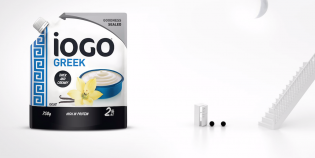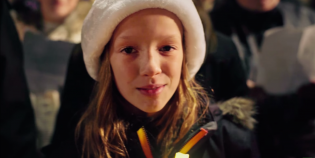At first glance, the Montreal office of Publicis Canada could pass for that of a Bay Street law firm. The gleaming glass and pewter-toned walls give the lobby a sense of stately, no-nonsense elegance, and the quiet of the hallways reinforces the notion that this is a place where Serious People do Serious Business.
For an advertising agency in a province that supposedly loves to laugh and values life over work, it’s a pretty sober environment. But it hasn’t dampened Jean-Jacques Streliski’s sense of playfulness. Looking out the window over a corner of the downtown Montreal skyline, Streliski, vice-president and strategic and creative planning director for Publicis, ponders a question about whether marketers and advertising agencies still need to treat Quebec as a distinct consumer society compared to the rest of Canada. And he keeps bringing it all back to sex-or at least, the idea of advertising being fundamentally about seduction.
“Can we help L’Oréal seduce the Quebec Woman?,” he asks, rhetorically. “No. The Quebec Woman does not exist anymore. She is the Global Woman, living in Quebec.”
Streliski is one of several Quebec advertising executives who believes that the era of Jacques Bouchard may be coming to an end. Bouchard, the founder of Montreal agency BCP in 1963, famously evangelized for original Quebec creative in the 1960s and ’70s, and in 1978 published the seminal Les 36 cordes sensibles des Quebecois, an analysis of the cultural and consumption habits of Quebecers that became known as the “Bible” of Quebec advertising. Bouchard effectively laid the groundwork for a distinct Quebec advertising culture by highlighting the aspects of the province that made it unique. But for some time now, another shift has been taking place in Quebec. The spread of information technology, an influx of immigrants from diverse cultures, and an increasing interest in travel has produced a citizenry that’s more open to the world, and an agency culture as interested in national and international business as it is in preserving its dominance in the province.
Many representatives of the industry in Quebec, in fact, are no longer interested in even talking about Bouchard’s teachings and Quebec’s distinctiveness. “To be honest, I couldn’t tell you the 36 cordes sensibles,” says Stéphane Charier, vice-president and creative director at Taxi’s Montreal office.
Yet for all its evolution, Quebec remains a unique oasis of French culture in predominantly English-speaking North America. “Quebec is perhaps less different than it was 20 years ago, but it is still culturally a very different place than the rest of Canada,” says Karl Moore, a marketing professor at Montreal’s McGill University. “There are substantive differences that marketers can tap into.”
In the midst of this conflict between the present and the past, between cultural similarities and differences, marketers based outside Quebec are looking for the most effective ways to target the province’s seven-million consumers. A market that has historically been a puzzle to non-Quebecois advertisers is no less confusing now that the pieces are changing shape.
Eric Blais, president of Toronto’s Headspace Marketing, was born and raised in Quebec and has made a business out of helping marketers understand its nuances. His firm conducts research and helps develop marketing plans for companies looking to make inroads with consumers in the province. “I always say to our clients that there are an awful lot of similarities between Quebec and the ROC (rest of Canada), and they certainly often don’t require a different approach,” says Blais. “But oftentimes, the differences can be a competitive advantage that you can leverage.”
Many of these differences would be familiar to Bouchard. Compared to other North Americans, Quebecers remain more concerned with living in the moment than planning for the future. The Quebec sense of humour, characterized by over-the-top absurdity and slapstick, contrasts the dry, observational sarcasm favoured by the rest of the continent. Quebecers are less likely to read detailed labels and more likely to make purchases based on emotion and impulse. And, as was the case decades ago, they love to see their homegrown pop culture icons-filmmakers, musicians and television personalities whose star status in Quebec rivals the Madonnas of the world-reflected in advertising.
In Bouchard’s heyday, Quebec-based agencies pointed to these kinds of psychographics to make the argument that marketers needed separate creative, made by Quebecers for Quebecers. Thirty years later, however, national and international companies have become better at adapting ads for Quebec and there is no longer always a clear benefit to creating original work for the market. The idea that marketers have greater flexibility in their approach to Quebec is symbolized in the phrase that adorns the boardroom wall at Headspace: “Successful brand building in Quebec is knowing when to adopt, adapt or create for Quebec.”
Still, marketers do need to consider the unique sensibilities of Quebecers. So say transplanted Montrealers Martin Beauvais and Daniel Charron, creative directors at Toronto’s Zig and Saatchi & Saatchi, respectively, who both became more aware of the differences between Quebec and the rest of Canada after moving out of the province.
“I’ve always thought of myself as a man of the world, but now that I’m in Toronto I feel the difference,” says Beauvais, who left his home province more than two years ago. “Quebec is this tiny little place in the world that’s stuck between all these different influences, and that changes the way people act.”
Beauvais points to the Quebec star system to illustrate. Quebecers are far more supportive of locally produced entertainment, he says. “The theatres-the mainstream ones-will have the latest French and Quebec movies, and an 18-year-old kid will go and see those movies.” For marketers used to latching on to the latest Hollywood product, the idea of referencing pop culture that the rest of the continent isn’t even exposed to can feel like a risky gambit.
But it’s one that often works. Earlier this year, Tide launched a North American campaign featuring American talk-show host and sitcom star Kelly Ripa, along with her husband. Charron and Saatchi’s CEO and executive creative director Brett Channer knew Ripa’s shows performed well in Quebec, but felt the brand would benefit from having a Quebecois spokesperson. Without changing the essential concept or content of the spot, they cast Quebec television personality Sonia Vachon, to whom Quebec audiences had responded favourably in previous Tide campaigns.
Charron believes that the Ripa-Vachon switch shows that while Quebecers are advancing toward the borderless global citizen ideal that Streliski talks about, they remain protective of francophone culture. “The differences are quieting down a lot,” he says, pointing to a stalling of the nationalist movement represented by the Bloc Québécois and the Parti Québécois and the embrace of English and other outside cultures. “But they still want to keep something distinct.”
This attitude plays out in the way Quebecers and the province’s ad industry address the growing influence of immigrant cultures. While urban centres like Montreal are becoming more multicultural, the province’s 2007 hearings concerning reasonable accommodation for immigrants suggest a lingering unease about preserving French culture.
“People [in Toronto] are much more inclined to use people of different races in advertising, whereas we don’t really do that in Quebec,” says Charron. “Sometimes when we’re casting here, they’ll choose someone and I’ll say, this doesn’t really work in Quebec because there are not so many people of that ethnic background.”
Blais, however, points to a recent campaign by the Quebec-based financial institution Desjardins as evidence that this mindset is fading. “You could not have a more visible sign of francophone protectionism and power-this was the savings bank that was created for Quebecers because we didn’t have access to the same capital and things like that-and here’s Desjardins today with a campaign that shows the Tremblays but also the Yungs and all the other ethnicities,” Blais says. “Independent of all that nonsense about reasonable accommodations, I think you’re starting to see [multiculturalism] creeping into advertising here.”
The 21st century Quebec consumer-open to the world, yet protective of Quebecois culture-is a study in contradictions. And advertisers looking to solve the Quebec riddle must sift through an assortment of competing opinions from agencies about how to best serve the market.
Marc Gagnier, vice-president, account services at Montreal’s Cossette Communication Group, believes that an agency must have a physical presence in the province to help marketers understand it. “This remains a business that’s about understanding consumers, and if you’re far away from them, I’m sorry, but you can only get so far by reading reports,” he says. “You absolutely have to have a foot on the ground here to make a mark.”
David Yost, an American who served as creative director at Marketel for a year and a half, concurs, arguing that Quebec’s idiosyncrasies can only truly be understood from the inside.
“To do effective advertising in Quebec, you’ve gotta be in Quebec,” he says. “You’ve got to understand the sensibilities, the sense of humour.”
Others argue that an agency can effectively serve Quebec from outside its borders, provided it has senior staff who are intimately familiar with the market. Beauvais, for example, may have moved to Toronto, but he still keeps tabs on his home province to provide up-to-date advice to national clients such as Molson Canadian and IKEA. “I make sure I go back a lot, because it’s not enough to be able to speak in French and write in French,” he says. “You have to know the pop culture.”
And Saatchi’s Channer hired Charron and his wife, account director Dominique Morin, in June of 2007, to infuse the Quebec perspective into the planning process at an earlier stage for clients like Toyota.
Charron says this system is preferable to his earlier experience as a partner at Republik in Montreal, where he saw marketers frequently treat Quebec as an afterthought. “In our case, instead of working on some creative in English and hoping that it works in French, we work from the start on everything.”
In one of his last interviews, Jacques Bouchard reflected on changes taking place in Quebec and the impact on advertisers and their agencies. “We’re losing the numbers war,” he told Infopresse in 2003. “In the early days, francophone advertisers could count on a market that represents one third of Canada’s population. Today, we only represent one quarter. It’s very disquieting.”
The francophone market may be shrinking, but what Bouchard saw as a potential crisis, agency heads like Sébastien Fauré, senior partner and president at Montreal’s Bleu Blanc Rouge, sees as an opportunity born of necessity. Fauré believes that the Quebec advertising industry needs to break free from the constraints of Bouchard’s 36 cordes and the very idea of Quebec as a distinct marketing society and demonstrate its ability to serve national and international clients.
“Basically, [agencies] played a trap for the last 20 years-a defensive mode,” says Fauré, employing a hockey analogy. “The idea was to build a wall around the language issue and the idea that Quebec is different. But Quebec consumers-especially the younger generation-are now bilingual, open to the world and don’t have the same defensive mindset that their parents had.”
According to Fauré, who counts VANOC and Burger King among his national clients, marketers should no longer assume that only Quebec agencies can handle Quebec work and, conversely, that only firms in English Canada can reach that audience. “The challenge now isn’t about where it comes from, it’s about who comes up with the best ideas.”
Like Fauré, François Lacoursière of Sid Lee-which won a global account for Adidas earlier this year-is more interested in expanding his agency’s terrain than trading on its Quebec expertise. “The industry was defined as offering a service based on the geography, but now we don’t define ourselves that way,” he says.
Lacoursière thinks the average Quebecer is also making this shift, citing a reduced fear of English language encroachment. “Speaking English is not seen as surrendering to a culture, but as a way to access more people, relationships and content.”
Nevertheless, Quebec isn’t about to blend inconspicuously into the rest of Canada anytime soon. “Prime Minister Harper talked about the Quebecois as a nation, and that wasn’t just for something to do. That was to recognize the reality in Quebec,” says McGill’s Moore. “The threat of separatism is definitely less, but there’s still 30%-40% of the population that would support it in a heartbeat, and even people who are not separatist recognize that the Quebecois have their own icons.
“A good marketer of consumer products who’s trying to tap into the culture and place the brand in the right context, I think they’ll want to have different ads in Quebec.”
L’Oréal Canada, for example, still believes in the idea of the Quebec Woman written off by Streliski, differentiated, from the rest of Canada at least, by the value she places on looking her best. “Image is a little more important, and there are more impulse purchases [in Quebec],” says Jean-François Gagné, director of market and consumer intelligence. “That’s an important dimension when we speak about makeup.”
Marketers can take solace in the knowledge that they have many options-from slight tweaks of an English campaign to a complete Quebecois overhaul-that have proven effective in the province. They can also rejoice that, in the new, more globally minded Quebec, consumers are becoming more receptive to advertising strategies based on universal insights. Still, Quebec’s French-language roots and culture ensure that, while it becomes more like the rest of Canada in some ways, it is and always will be a distinct society.
Even Streliski acknowledges that Quebec, while it has opened up to the rest of the world, still occupies a unique place in it.
“I can’t think of another place quite like it on the planet.”










